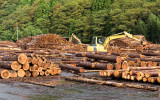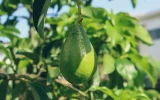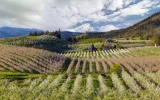How Many Avocado Trees Can You Plant per Hectare?
The number of avocado trees that you can plant per hectare to maximize your yield depends on several factors, including the type of avocado tree, the spacing between the trees, and the overall size of your orchard. With the increasing demand for this fruit tree, let's explore its optimal spacing and density per hectare and the factors that affect it.
In general, you can plant anywhere from 100 to 550 avocado trees per hectare. Planting in a high-density orchard will allow you to plant up to 550 trees per hectare. On the other hand, planting in a traditional orchard will allow you to plant around 100 trees per hectare.
Avocado trees come in different varieties, such as Hass, Fuerte, and Zutano, and each has its own unique characteristics. Let's get to know more about these varieties and how they affect the density per hectare.
Tree densities influence layout designs when figuring out how to start an avocado farm from scratch.
Summary
- The optimal tree density per hectare for Hass avocado trees is 150–200, allowing for sufficient access to sunlight and airflow and promoting healthy tree growth and fruit production.
- The ideal density per hectare for Fuerte avocado trees is 100–150 due to their larger size and spreading growth habit, which require more space between trees to allow for adequate sunlight exposure, airflow, and overall tree health.
- The optimum tree density per hectare for Zutano avocado trees is 200–250, attributed to their relatively small and compact canopy, adaptability to high-density planting, and the resulting land use efficiency and higher avocado yields.
- Large avocado farms, exceeding 20 hectares, can sustain an even higher density per hectare, typically ranging from 800 to 1000 trees.
- For high-density orchards with a spacing of 3 x 5 meters, the optimal number of avocado trees is 550 per hectare.
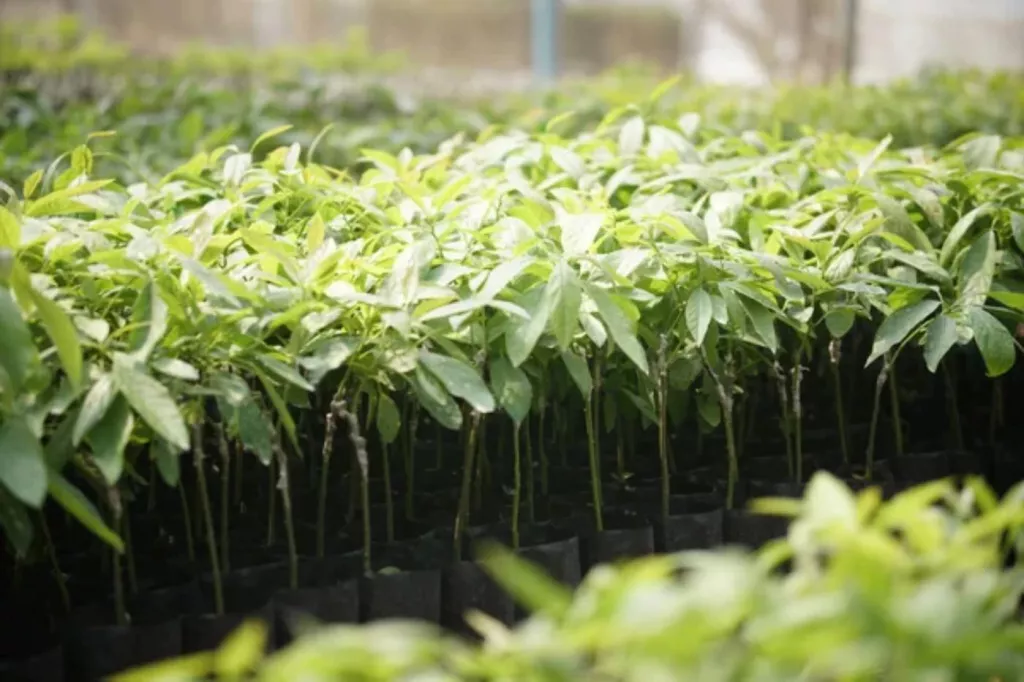
On this page:
Optimal Tree Density per Hectare for Different Avocado Varieties
Below is a table showing the optimal tree density per hectare for different avocado varieties:
| Avocado Tree Variety | Estimated Tree Density (per hectare) |
|---|---|
| Hass | 150-200 |
| Fuerte | 100-150 |
| Zutano | 200-250 |
The optimal density for the Hass variety is 150-200 trees per hectare
The Hass avocado, scientifically known as Persea americana, is a widely popular and commercially significant variety of avocado. It is highly regarded for its creamy texture, rich flavor, and versatility in culinary applications.
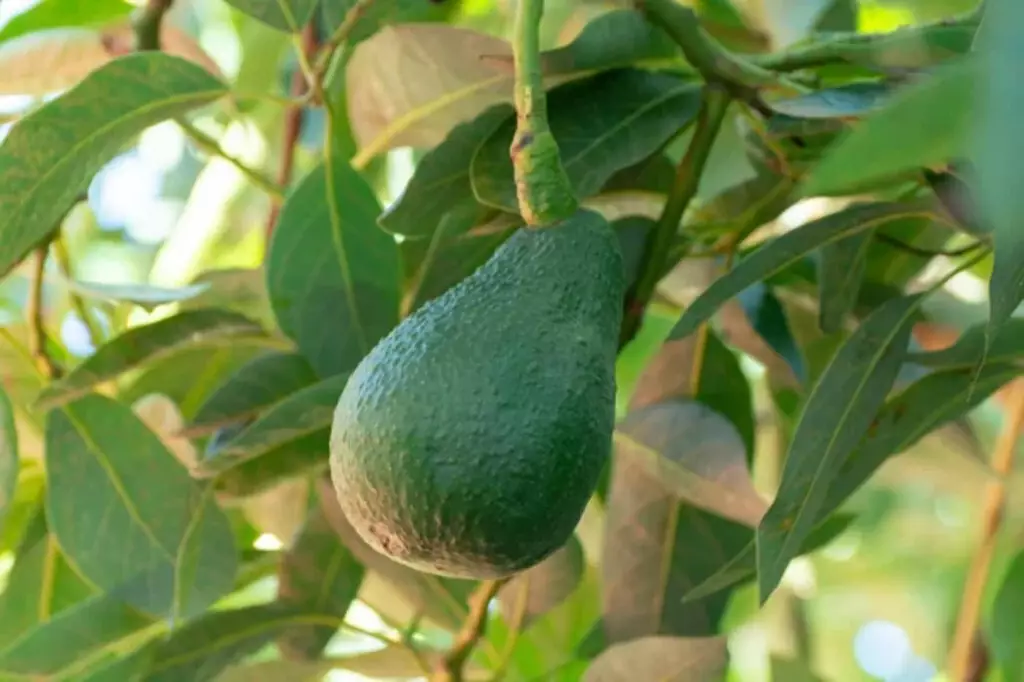
The Hass avocado has become a staple in many cuisines around the world, particularly in the form of guacamole, salads, and as a topping for sandwiches and burgers.
Originating in California, this variety has gained global prominence and now accounts for over 80% of the avocado market. Its distinctive features include a rough, bumpy skin that darkens as it ripens, making it easy for consumers to determine its readiness for consumption.
The flesh of the Hass avocado is known for its buttery consistency and nutty taste, making it a preferred choice for both culinary professionals and home cooks. It is also a good source of healthy fats, particularly monounsaturated fats, which are beneficial for heart health, as well as vitamins and minerals, including potassium, vitamin K, vitamin E, and various B vitamins.
The Hass variety of avocados is known for its high productivity and adaptability to various growing conditions. They have a recommended range of 150-200 trees per hectare, which allows for sufficient access to sunlight and airflow, promoting healthy tree growth and fruit production. Avocado trees require full sun exposure for at least 6 hours a day.
The ideal density per hectare for the Fuerte variety is 100-150 trees per hectare
The Fuerte avocado is a Mexican variety that has a rich history and a distinctive set of characteristics. It was once the most popular avocado variety in the world before being overtaken by the now ubiquitous Hass avocado.
The Fuerte avocado is known for its smooth, thin skin, which makes it easy to peel, and its pale green flesh, which has a creamy, buttery texture and a nutty flavor.
Its creamy texture and rich flavor make it an ideal ingredient for salads, sandwiches, and as a spread on toast. The Fuerte avocado's flavor profile adds a delicious and satisfying element to a wide range of dishes, making it a popular choice for both home cooks and professional chefs.
This variety typically has a lesser tree density per hectare (100-150 trees per hectare) compared to other avocado varieties due to its growth habits and size.
Fuerte avocado trees tend to be larger and have a more spreading growth habit compared to some other avocado varieties. As a result, they require more space between trees to allow for adequate sunlight exposure, airflow, and overall tree health.
This larger tree size and spreading growth habit necessitate a lower tree density per hectare to ensure that each tree has sufficient room to grow and thrive.
The optimum tree density per hectare for Zutano avocado trees is 200-250 trees
The Zutano avocado trees are renowned for their high tree density, with an impressive 200-250 trees per hectare. This density is a result of several factors that contribute to the successful cultivation of Zutano avocado trees, such as the following:
1. Because of their growth habit
Zutano avocado trees have a relatively small and compact canopy compared to other avocado varieties. This means that they require less space between trees, allowing for a higher density of trees per hectare without compromising the health and development of the individual trees.
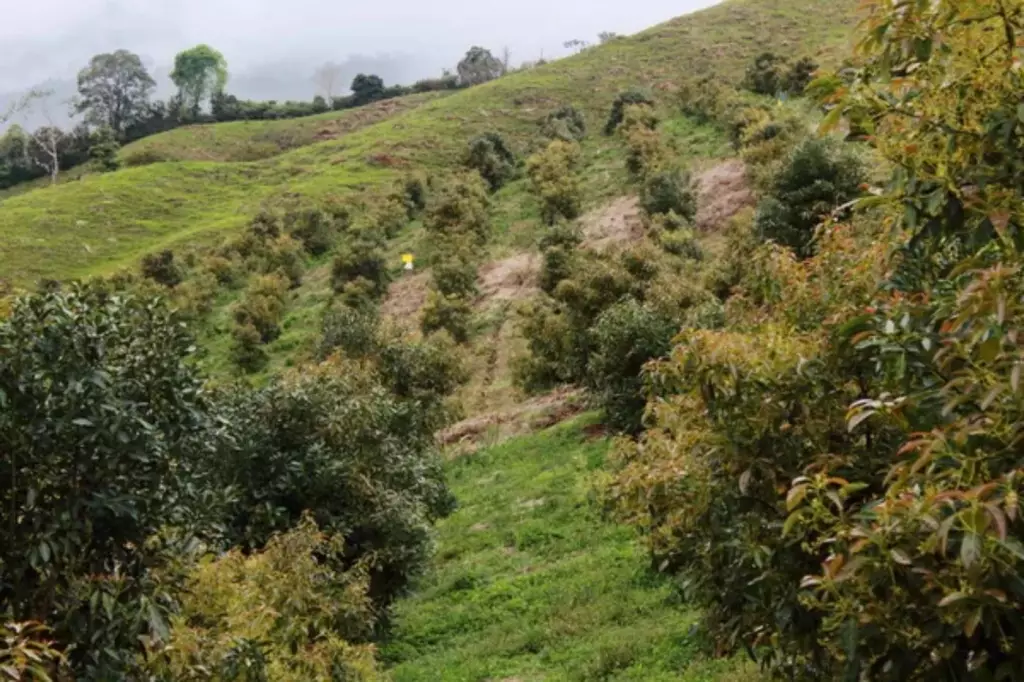
2. They can adapt to high-density planting
They have a strong root system that can efficiently absorb nutrients and water from the soil, enabling them to thrive in close proximity to other trees. This adaptability to high-density planting makes Zutano avocado trees well-suited for orchards with a high tree density.
The high tree density of Zutano avocado orchards maximizes land use efficiency, allowing for a greater number of trees and higher avocado yields per hectare. It also provides environmental benefits such as reduced soil erosion and improved microclimate regulation within the orchard.
Ideal Number of Avocado Trees Based on Planting Scheme and Spacing
The table below presents the ideal number of avocado trees based on different planting schemes and spacing:
| Planting Scheme | Spacing (meters) | Trees per Hectare |
|---|---|---|
| High-density orchard | 3 x 5 | 550 |
| Medium-density orchard | 5 x 7 | 285 |
| Traditional orchard | 10 x 10 | 100 |
Optimal number of avocado trees for high-density orchards
High-density planting allows for closer spacing of trees, such as 3 x 5 meters apart, resulting in the potential for up to 550 trees per hectare. It offers several potential advantages such as the following:
- It maximizes land use efficiency, allowing for a greater number of trees and thus potentially higher yields per hectare. Just an acre of avocado trees already has a profit potential of around $10,000 to $15,000.
- It can also lead to earlier canopy closure, which can help in weed suppression and reduce soil erosion.
- Additionally, high-density orchards may benefit from increased efficiency in water and nutrient use, as the close spacing can create a more uniform environment for irrigation and fertilization.
However, high-density planting also presents challenges:
- The management of such orchards requires careful attention to pruning, training, and pest and disease control to ensure that the trees remain healthy and productive.
- The close spacing may limit access for machinery and equipment, potentially increasing the labor requirements for certain orchard operations.
Optimal number of avocado trees for medium-density orchards
The medium-density orchard planting scheme with a spacing of 5 x 7 meters allows for approximately 285 avocado trees per hectare. This represents a balance between the high-density and low-density options, offering a compromise between efficient land use and ease of management.
In a medium-density orchard, the spacing between the trees allows for a more open canopy compared to high-density planting. This can facilitate better air circulation and sunlight penetration, potentially reducing the risk of certain diseases and promoting overall tree health.
Additionally, the slightly wider spacing may provide more room for machinery and equipment to maneuver compared to high-density orchards, potentially reducing labor requirements for certain orchard operations.
At the same time, the medium-density planting scheme still allows for a considerable number of trees per hectare, offering the potential for good overall productivity. It strikes a balance between maximizing land use efficiency and allowing for adequate space for individual tree growth and maintenance.
Optimal number of avocado trees for traditional orchards
The traditional orchard planting scheme with a spacing of 10 x 10 meters allows for approximately 100 avocado trees per hectare.
In a traditional orchard with wider spacing, each avocado tree has more room to spread its canopy and root system. This can potentially reduce competition for resources such as sunlight, water, and nutrients among the trees.
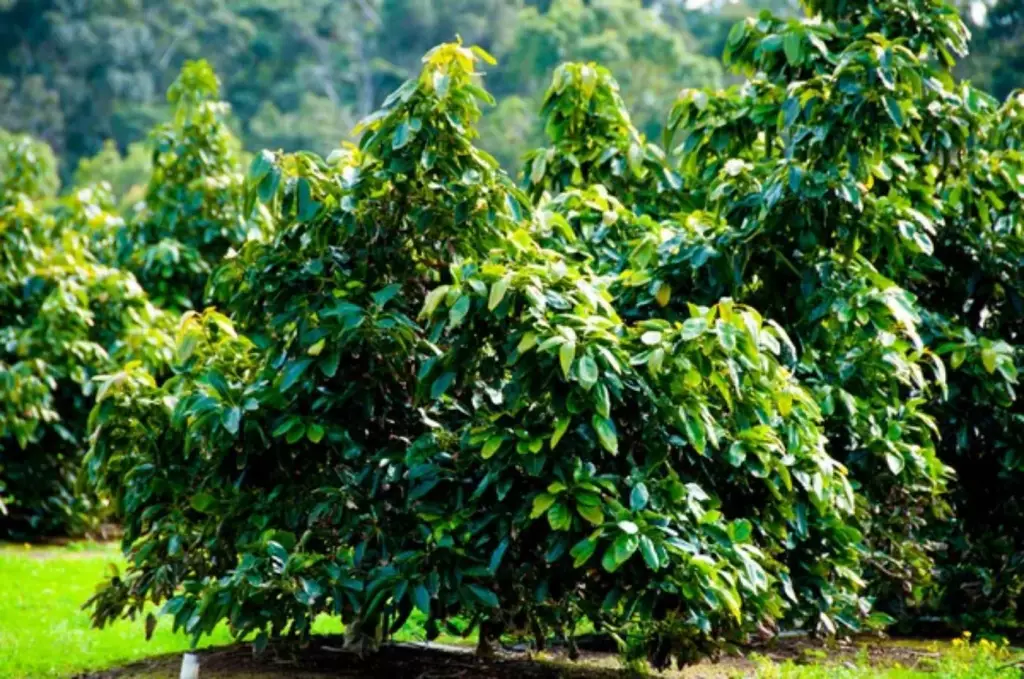
Additionally, the wider spacing allows for easier access for maintenance and harvesting activities, as well as the use of larger machinery and equipment.
However, the lower planting density also means that the overall productivity per hectare may be reduced compared to higher-density orchards.
It may take longer for the canopy to close, potentially leading to increased weed competition and soil erosion in the early stages of orchard establishment.
Furthermore, the lower number of trees per hectare may result in underutilization of available land, especially if the goal is to maximize productivity within a given area.
The traditional orchard planting scheme may be suitable for growers who prioritize ease of management, accessibility, and a more open orchard layout. It may also be well-suited for regions with ample available land and where the focus is on producing high-quality fruit rather than maximizing overall yield per hectare.
Determining the Ideal Density per Hectare Across Various Farm Sizes
Below is a table presenting the ideal number of avocado trees based on different farm sizes:
| Farm Size (Hectares) | Estimated Density per Hectare |
|---|---|
| Small farm (1-5 hectares) | 400-600 trees |
| Medium farm (5-20 hectares) | 600-800 trees |
| Large farm (20+ hectares) | 800-1000 trees |
Density per hectare for small avocado farms
For small farms ranging from 1 to 5 hectares, the estimated density per hectare is typically between 400 and 600 avocado trees.
This range takes into account the limited space available on small farms and aims to strike a balance between maximizing yield and allowing sufficient room for each tree to thrive.
With a lower density, each tree has more access to sunlight and nutrients, which can promote healthier growth and higher fruit quality. A single avocado tree can produce 200 lbs. of fruit, which can sell for about $2 per pound.
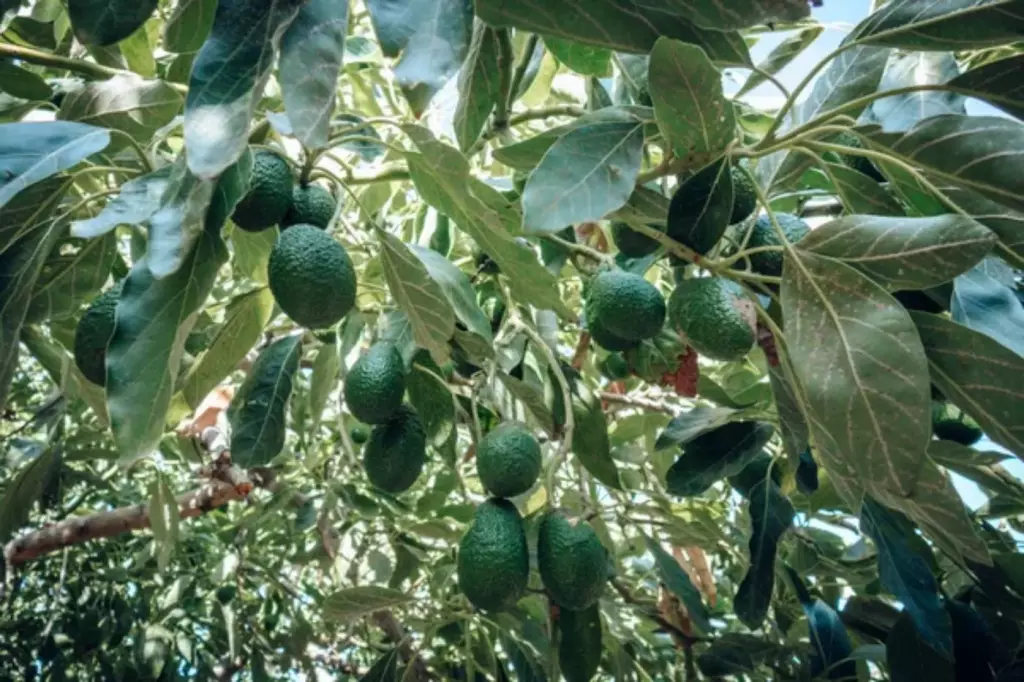
Adjusting tree density may help speed up the time it takes for avocado trees to start bearing fruit commercially. Here are other ways to make avocado trees bear fruit faster.
Density per hectare for medium-sized avocado farms
Medium-sized avocado farms, spanning 5 to 20 hectares, can accommodate a slightly higher density per hectare, ranging from 600 to 800 trees.
The increased space allows for a more efficient use of land while still providing adequate room for the trees to develop and produce high-quality fruit. This density range balances productivity with the need for proper orchard management, including irrigation, pest control, and maintenance activities.
Density per hectare for large avocado farms
Large avocado farms, exceeding 20 hectares, can sustain a higher density per hectare, typically ranging from 800 to 1000 trees.
The larger scale of these farms allows for a more intensive planting approach, maximizing the overall yield while leveraging economies of scale.
However, you may need to ensure that the increased density does not lead to overcrowding, which can negatively impact tree health and productivity.
